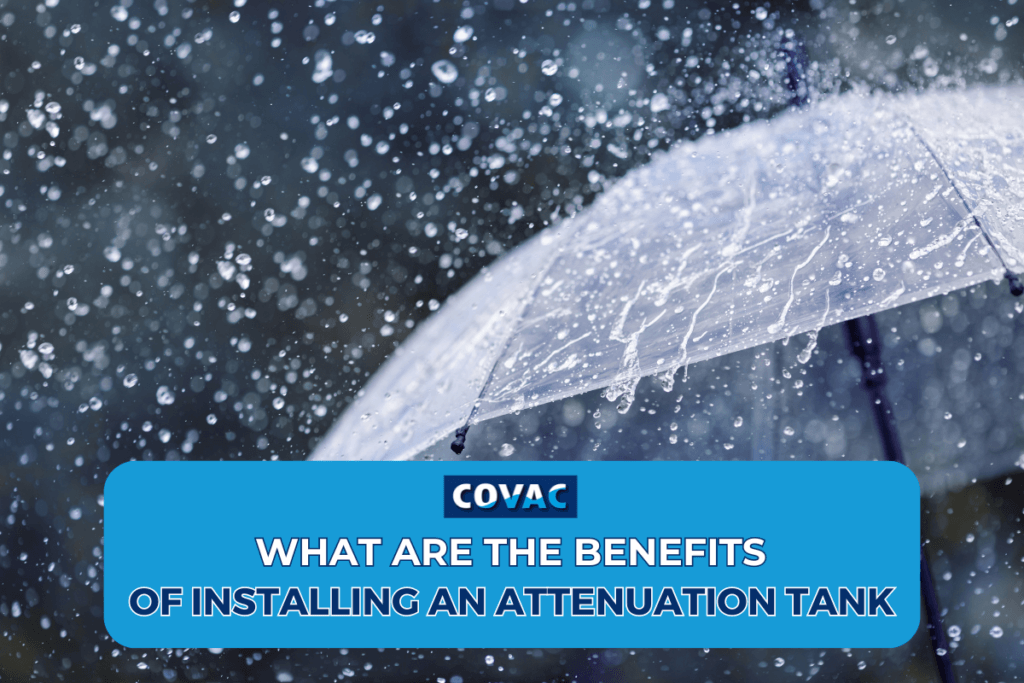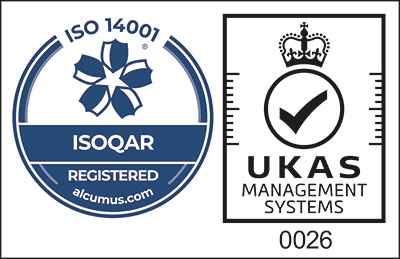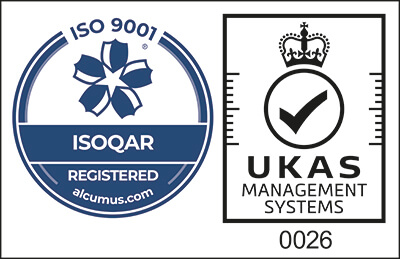
Installing an attenuation tank can provide numerous benefits for you and your property, from reducing flood risk to improving water quality. These tanks also support sustainable development by promoting the reuse of rainwater for irrigation or industrial processes. Discover how attenuation tank installation can offer both environmental and economic advantages for your property.
Table of Contents:
- What Is An Attenuation Tank?
- What Does Attenuation Mean In Stormwater?
- How Do Attenuation Tanks Work?
- What Are The Benefits of Attenuation Tanks?
- How Can I Maintain An Attenuation Tank?
- Should I Consider A Water Attenuation Tank?
What Is An Attenuation Tank?
An attenuation tank is a structure that is used to temporarily store rainwater and control its release into drainage systems or the environment.
A water attenuation tank can be made from various materials, including concrete, plastic or steel. They can come in different shapes and sizes depending on the specific purpose and requirements of the site.
They can be installed either underground or above ground and are equipped with valves or outlets to regulate the release of water.
What Does Attenuation Mean In Stormwater?
Attenuation in stormwater refers to the process of storing rainwater runoff and releasing it gradually over time. This helps to reduce the peak flow rate of stormwater entering drainage systems, preventing flooding on your property and reducing strain on overloaded drainage systems.
How Do Attenuation Tanks Work?
Attenuation tanks work by collecting rainwater and holding it within a tank. It typically collects water from roofs, paved areas and other impermeable surfaces. The rainwater is diverted into the tank through a network of pipes and inlets, ensuring efficient capture and storage.
Within the tank, there is a flow control system which regulates how much water is being pumped into the drainage system. It slows down the flow of water into drainage systems at a rate that is manageable.
What Are The Benefits of Attenuation Tanks?
Flood prevention
Attenuation tanks significantly reduce the risk of flooding on your property. The tanks hold onto the water, acting as a temporary storage container for excess rainwater during heavy downpours. They have a controlled release mechanism, allowing the water to slowly release at a more manageable rate. This prevents sudden surges of water overwhelming drainage systems, which is a major cause of flooding.
By releasing the rainwater steadily over a period of time, you can reduce the peak flow rate of stormwater runoff.
Reduced strain on drainage systems
Attenuation tanks reduce strain on drainage systems by lowering the peak flow rate of rainwater during heavy precipitation.
Furthermore, attenuation tanks minimise the wear and tear on drainage systems by decreasing the frequency and intensity of high-flow conditions. This not only extends the lifespan of existing infrastructure but also reduces maintenance costs.
Improved water quality
A water attenuation tank can improve water quality by acting as a filtration system for rainwater runoff. It can often contain dirt and pollutants picked up from roads and fields.
When water enters the attenuation tank, its flow rate slows down considerably. This allows for heavier particles like sediment to settle at the bottom of the tank, before the water is released.
Some attenuation tanks are designed with vegetation planted around or within them. These plants act as natural filters, absorbing the nutrients and pollutants from the water as it slowly passes through the root systems. This further cleanses the water, removing impurities.
Reuse of rainwater
Water attenuation tanks are able to facilitate the reuse of captured rainwater. The rainwater can be effectively utilised for irrigation, landscaping, toilet flushing, and cleaning, which conserves potable water for essential uses.
Savings on water bills
By storing rainwater runoff, attenuation tanks reduce reliance on water supplies, as you can reuse it for non-potable use. This leads to significant cost savings on your water bills. Additionally, using rainwater can improve soil quality and promote healthier plant growth.
How Can I Maintain An Attenuation Tank?
Maintaining and protecting your attenuation tank is crucial to ensure its effective operation and longevity. Here are our recommendations:
- Complete regular inspections – you should check your tank for any signs of damage or wear, both on the interior and exterior of your attenuation tank. This includes cracks, dents or corrosion. You should also look out for any leaks or blockages. Even minor leaks can lead to major issues so address these immediately.
- Clean your water attenuation tank – you should regularly clean your tank, removing debris and sediment from the bottom, to ensure your tank is operating properly. Clean the internal surfaces to ensure smooth water flow.
- Monitor the water quality – you should monitor the water quality to detect any signs of contamination. Test the water to identify any pollutants that have settled in the tank.
- Line your tank – attenuation tank lining can significantly improve the longevity of your tank. Structural damage and leaks can alter the efficiency of your tank. Lining your tank can make it resistant to corrosion and abrasion, which both weaken the tank over time.
- Get your tank serviced – regular professional servicing on your attenuation tank is highly recommended. While it may seem your tank is functioning well, professionals have the expertise to assess its efficiency and identify any potential issues. Identifying potential problems before they become major issues can increase the longevity of your tank.
Should I Consider A Water Attenuation Tank?
Whether you’re looking to enhance flood resilience, reduce strain on drainage systems, or save on water bills, an attenuation tank is a practical solution. It makes a great investment for reducing the risk of flooding not only on your property but within your local community. With the risk of flooding in many areas increasing, why not take the first step towards a more sustainable future by installing an attenuation tank today.
Already have an attenuation tank? Ensure it continues to perform at its best with professional maintenance and servicing. COVAC’s high-performance coating systems can protect your tank and ensure it serves you well for many years to come. Whether you’re considering attenuation tank installation or maintenance, take action today to protect your property and support sustainable water management practices.










